General Content
This is the last in a series of articles on the history of Hospitals in the Rochester area. In the late eighteenth and early nineteenth-century, western New York was relatively uninhabited but with the opening of the Erie Canal in 1825, waves of migrating settlers streamed into western New York. Small communities grew out of the wilderness as settlers traveled west in search of land and economic prosperity. Wayne County was established on April 11, 1823 from portions of Seneca and Ontario Counties. With the rise in population, the need for medical practitioners attracted many established physicians from outside the region to settle in the new county.
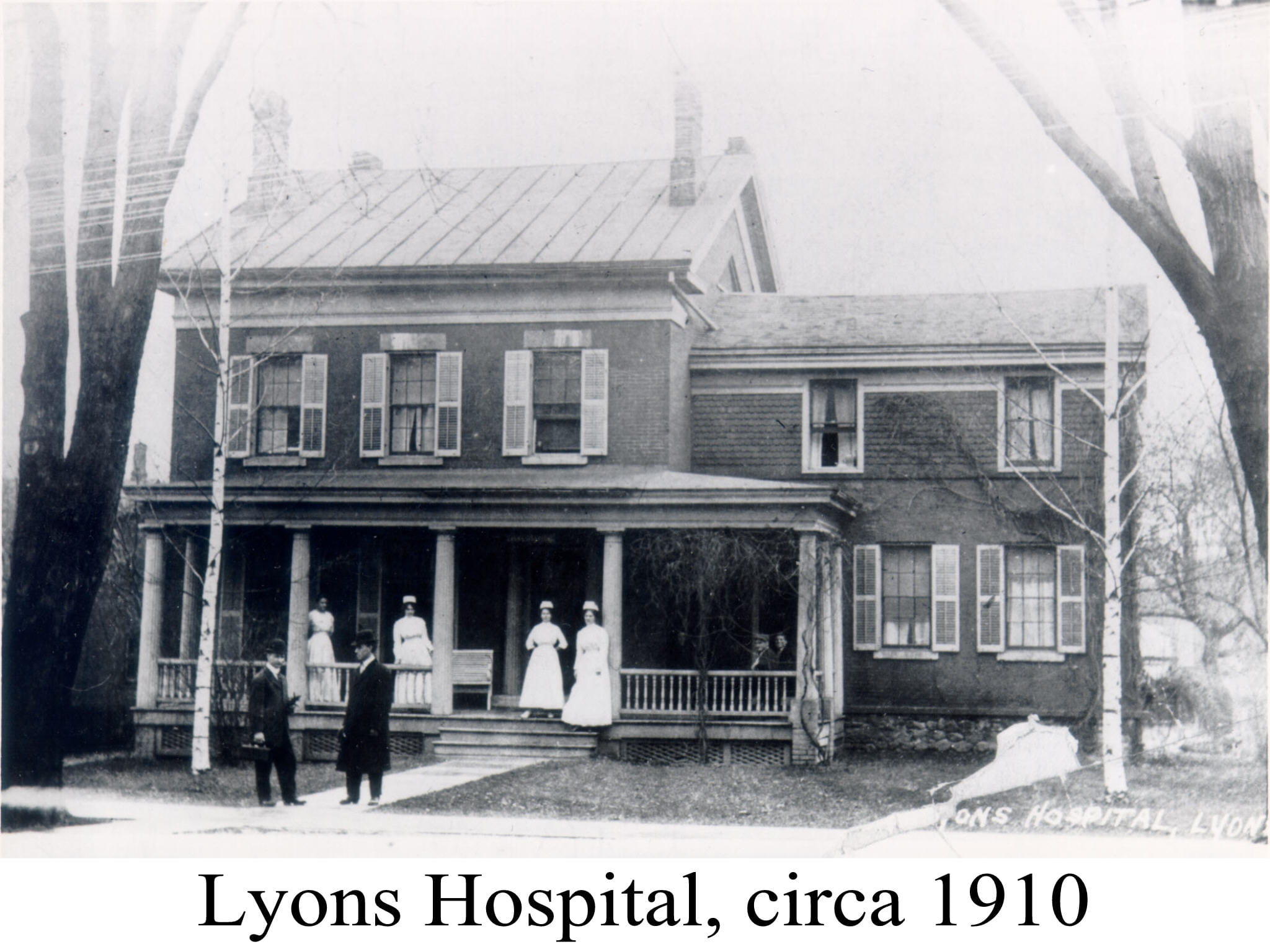 The history of health care in the county can be traced back to these early physicians and be best described as a family affair. The origins of the hospitals in Wayne County are tied to the history of six individual families of physicians in whose devotion to their patients and service to their communities created the Lyons Hospital, E.J. Barber Hospital, Wolcott Hospital, Myers hospital and Newark Hospital.
The history of health care in the county can be traced back to these early physicians and be best described as a family affair. The origins of the hospitals in Wayne County are tied to the history of six individual families of physicians in whose devotion to their patients and service to their communities created the Lyons Hospital, E.J. Barber Hospital, Wolcott Hospital, Myers hospital and Newark Hospital.
The first hospital to open in Wayne County was the Shuler Hospital in Lyons, N.Y. in November 1899. Dr. Charles H. Towlerton, M.D. was a native of Butler Township and worked in partnership with Mrs. Phillip Shuler to establish the hospital. The property was owned and the hospital was managed by Mrs. Shuler with Dr. Towlerton overseeing the medical care.
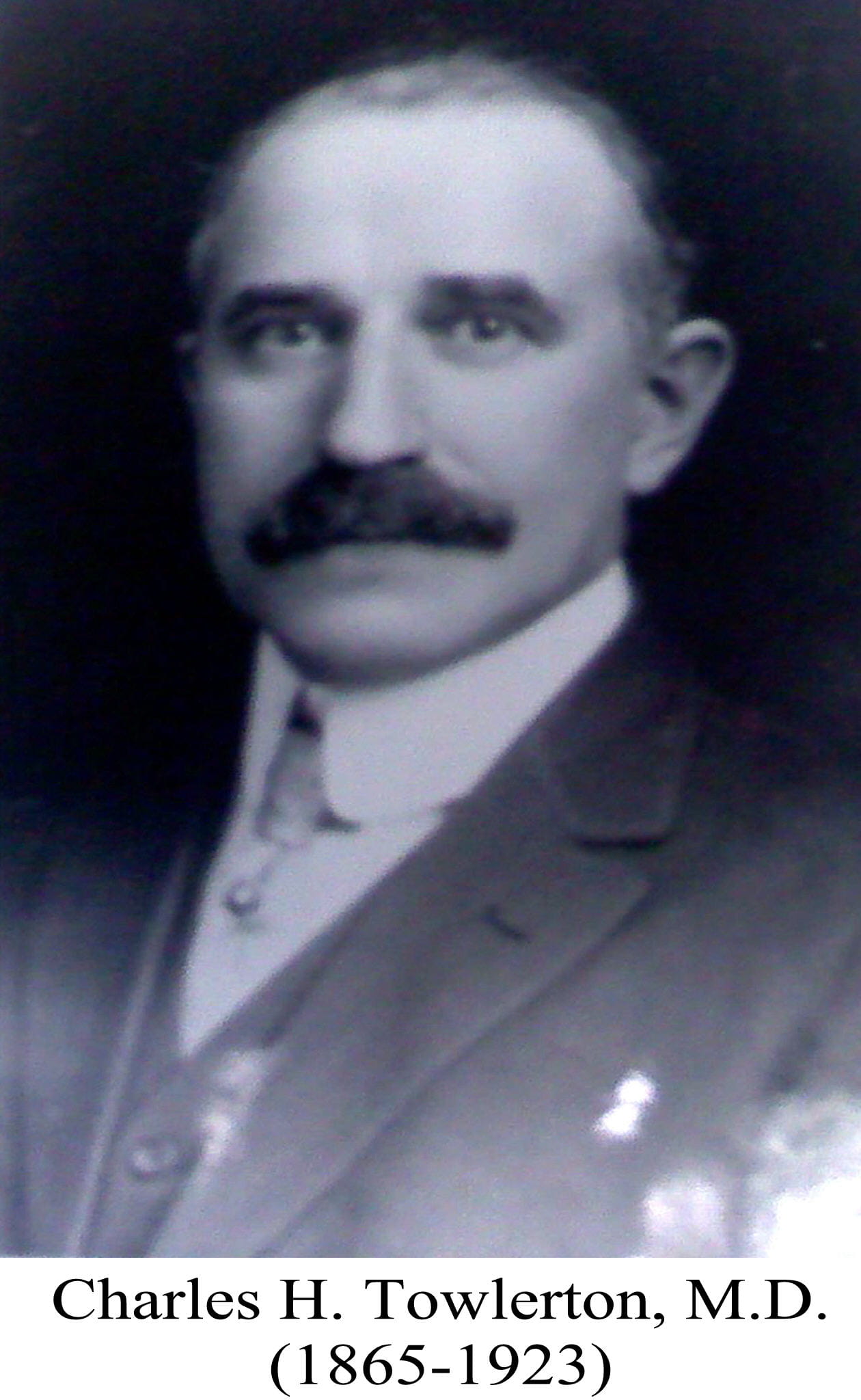 After a few years, Dr. Towlerton purchased a home on Broad Street and after renovation opened the Lyons Hospital in 1905. He would manage the hospital until his death on September 14, 1923. The doctor’s son, Dr. Fletcher J. Towlerton joined in partnership with Dr. Rueben S. Simpson and formed Towlerton-Simpson, Inc. and purchased the hospital. The hospital continued to thrive into the 1930s. Suddenly, in 1933, Dr. Fletcher Towlerton died at age 38 due to complications following surgery at the renowned Cleveland Clinic.
After a few years, Dr. Towlerton purchased a home on Broad Street and after renovation opened the Lyons Hospital in 1905. He would manage the hospital until his death on September 14, 1923. The doctor’s son, Dr. Fletcher J. Towlerton joined in partnership with Dr. Rueben S. Simpson and formed Towlerton-Simpson, Inc. and purchased the hospital. The hospital continued to thrive into the 1930s. Suddenly, in 1933, Dr. Fletcher Towlerton died at age 38 due to complications following surgery at the renowned Cleveland Clinic.
The hospital continued under Dr. Simpson’s leadership until 1948, when he suffered a permanently incapacitating stroke. Doctor Towlerton’s and Simpson’s wives oversaw the operation of the hospital until 1951 when a group of eight local physicians purchased the institution and renamed it the Lyons Community Hospital. The dream of Dr. Charles Towlerton continued to serve the community until July 1973 when the New York State Department of Health ordered the hospital closed for safety and construction violations. During this time period in Lyons another hospital opened and together both hospitals worked closely to serve the citizens of Lyons and the surrounding communities.
Dr. John C. Carmer, M.D. was the youngest child of a well-respected Lyons physician named Myron E. Carmer, M.D. The young doctor was undoubtedly influenced by his father’s example of a career in medicine. After graduating from Cornell Medical College in 1910 and establishing his practice in Lyons, Dr. John Carmer began plans to establish his own hospital. Named in honor of a childhood friend who invested in the new hospital, the Edward J. Barber Hospital opened on September 1, 1917. Initially outfitted with 10 beds, an expansion in 1932 increased the bed space to 26.
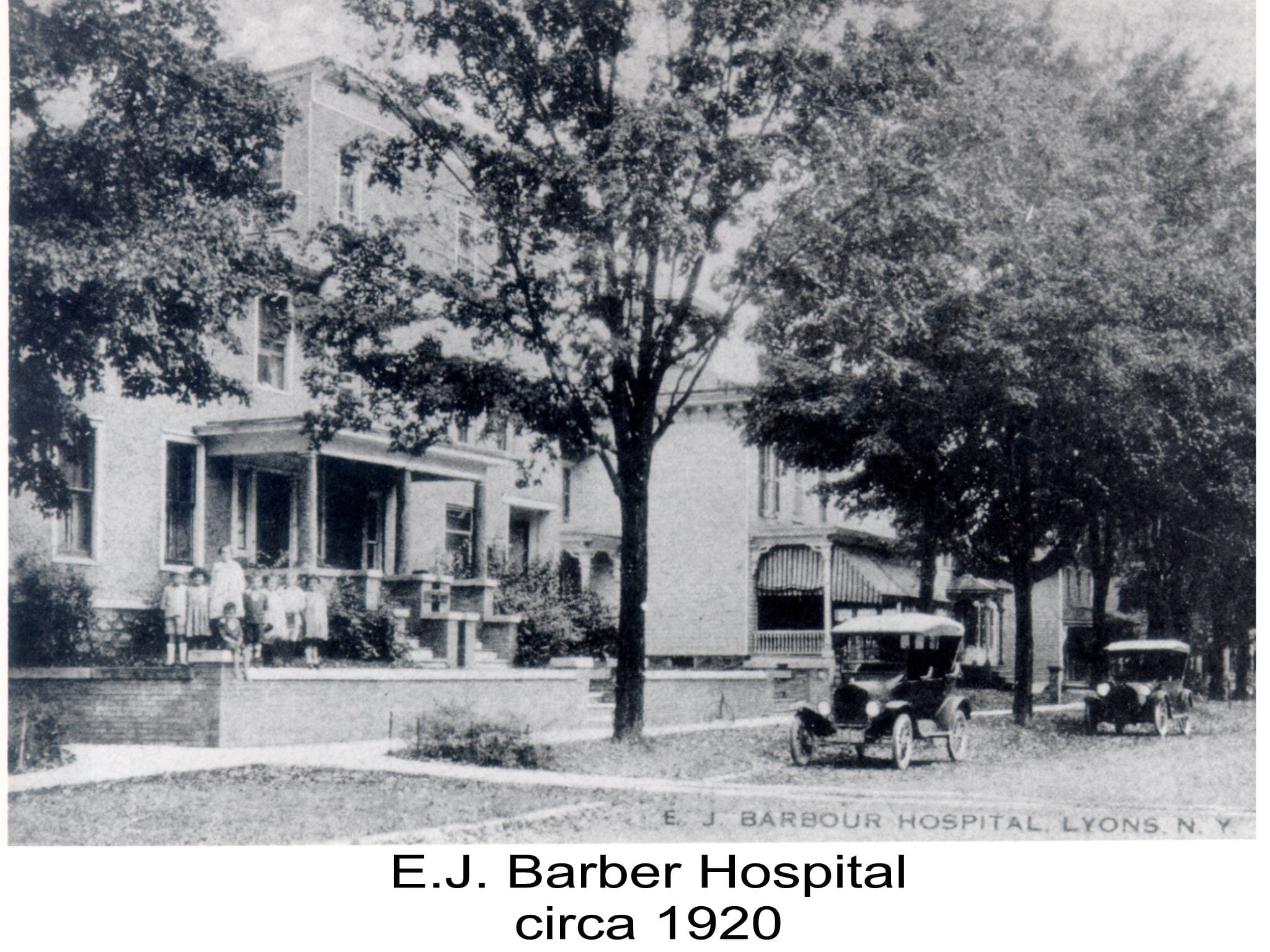 The third generation of the Carmer family to follow into a career in medicine was John’s son, Myron E. Carmer, II. He joined the hospital staff in 1947 and continued his father’s work upon the elder’s death in 1961. Over the years, the hospital continued to modernize and in 1957 a new wing was added accommodating new operating, recovery, and sterilization rooms. The 1960s and 1970s brought progressive change to the health care industry. Legislative mandates and rising costs forced many smaller institutions to close or consolidate. Although Lyons Community and Barbers hospital had joined together financially in September 1964, the challenges were too great and on November 1, 1973, the Edward J. Barber Hospital closed after fifty-six years. The story of the hospital that served Wayne County the longest begins in 1823, the year the county was formed.
The third generation of the Carmer family to follow into a career in medicine was John’s son, Myron E. Carmer, II. He joined the hospital staff in 1947 and continued his father’s work upon the elder’s death in 1961. Over the years, the hospital continued to modernize and in 1957 a new wing was added accommodating new operating, recovery, and sterilization rooms. The 1960s and 1970s brought progressive change to the health care industry. Legislative mandates and rising costs forced many smaller institutions to close or consolidate. Although Lyons Community and Barbers hospital had joined together financially in September 1964, the challenges were too great and on November 1, 1973, the Edward J. Barber Hospital closed after fifty-six years. The story of the hospital that served Wayne County the longest begins in 1823, the year the county was formed.
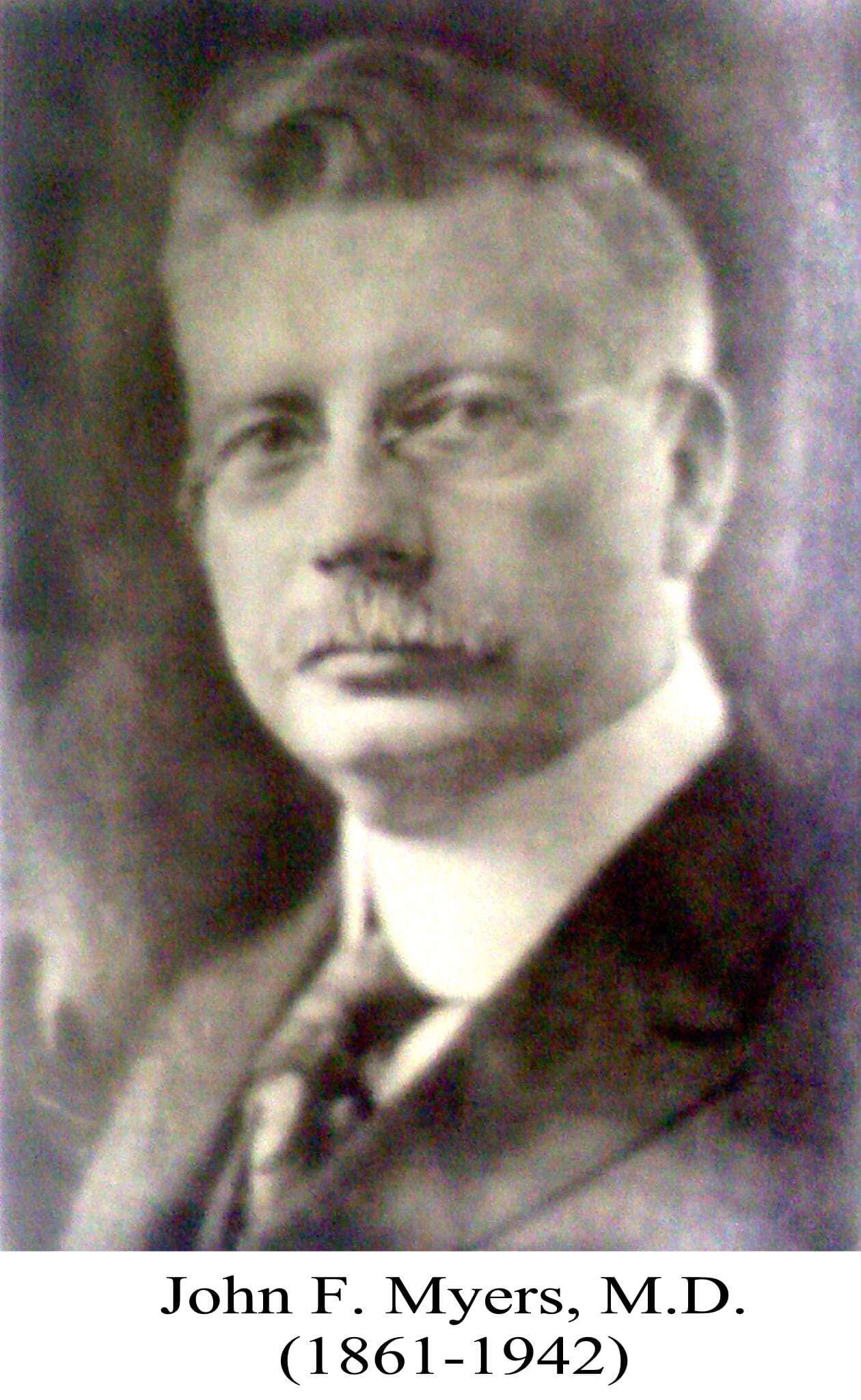 On March 27, 1823, Levi M. Gaylord was born to Dr. Levi and Dottie Merriman Gaylord. His father, Dr. Gaylord was one of the early physicians to settle in Sodus, N.Y. Young Levi followed his father’s example in a career in medicine. He graduated from the Geneva Medical College in 1845 and opened his practice in Sodus in 1848. Although none of his children would follow in his footsteps, Dr. Levi M. Gaylord’s legacy became a local school boy who was fascinated with medicine and became his student. John F. Myers knew he wanted to be a physician from an early age. He spent his free time at Dr. Gaylord’s office asking questions and after completing his local schooling, he enrolled then graduated from Columbia University Physicians and Surgeons College in 1887. He returned to Sodus that same year and opened his practice not far from Dr. Gaylord’s residence and office. Although Dr. Gaylord died three years later in 1890, his vision of a community hospital was passed on the Dr. Myers. Over the next decade, Dr. Myers purchased Dr. Gaylord’s former residence and medical office and began renovations on what would become the Myers Hospital. It opened in 1900 and became only hospital on Ridge Road between Rochester and Oswego. The hospital operated with 15 beds and a staff of two nurses a separate wing and new patient treatment rooms were added in 1924. In July of that same year, Dr. Myers son, F. Linwood Myers, M.D. joined the hospital staff.
On March 27, 1823, Levi M. Gaylord was born to Dr. Levi and Dottie Merriman Gaylord. His father, Dr. Gaylord was one of the early physicians to settle in Sodus, N.Y. Young Levi followed his father’s example in a career in medicine. He graduated from the Geneva Medical College in 1845 and opened his practice in Sodus in 1848. Although none of his children would follow in his footsteps, Dr. Levi M. Gaylord’s legacy became a local school boy who was fascinated with medicine and became his student. John F. Myers knew he wanted to be a physician from an early age. He spent his free time at Dr. Gaylord’s office asking questions and after completing his local schooling, he enrolled then graduated from Columbia University Physicians and Surgeons College in 1887. He returned to Sodus that same year and opened his practice not far from Dr. Gaylord’s residence and office. Although Dr. Gaylord died three years later in 1890, his vision of a community hospital was passed on the Dr. Myers. Over the next decade, Dr. Myers purchased Dr. Gaylord’s former residence and medical office and began renovations on what would become the Myers Hospital. It opened in 1900 and became only hospital on Ridge Road between Rochester and Oswego. The hospital operated with 15 beds and a staff of two nurses a separate wing and new patient treatment rooms were added in 1924. In July of that same year, Dr. Myers son, F. Linwood Myers, M.D. joined the hospital staff.
Both doctors would enjoy long and well-respected careers as well as be recognized for their community service. Dr. John Myers would succumb to advanced age and illness on Christmas day 1942 at the age of 81. Dr. F. Linwood Myers continued his father’s work managing the institution until 1955, when local communities donated funds to purchase the hospital and convert it into a community owned institution named the Myers Community Hospital. Dr. Myers retired in 1960 but continued to see a few patients until his death on April 12, 1973.
 Myers Community Hospital continued to grow and in 1998 joined in partnership with the Newark-Wayne Community Hospital to form a non-profit organization ViaHealth of Wayne. As ViaHealth of Wayne, both hospitals became affiliated with Rochester General Hospital and Myers Community Hospital continued to serve Northern Wayne County until it was closed in 2002. The hospital that, in whose humble origins, would nourish the creation of Newark Wayne Community Hospital was a result of the work of a father and son medical partnership.
Myers Community Hospital continued to grow and in 1998 joined in partnership with the Newark-Wayne Community Hospital to form a non-profit organization ViaHealth of Wayne. As ViaHealth of Wayne, both hospitals became affiliated with Rochester General Hospital and Myers Community Hospital continued to serve Northern Wayne County until it was closed in 2002. The hospital that, in whose humble origins, would nourish the creation of Newark Wayne Community Hospital was a result of the work of a father and son medical partnership.
The original Newark hospital opened in February 1921. It was the dream of doctors George D. York, M.D. and his son Edwin W. York, M.D. The elder Dr. York began his practice in Huron, N.Y. in 1881 after graduating from the university of Buffalo medical college in 1877. He quickly established himself in his profession and community and during his career he served as the county coroner and as president of the county medical society. Moving to Newark in 1898, Dr. York became aware of the community’s desire for a hospital. His son, Edwin W. York was born in 1892. After completing his medical education at Bellevue Medical College in 1917, he was offered a commission in the U.S. Navy Medical Corps. Dr. York returned to Newark after his military service and completed his internship at the Rochester General Hospital. Joining his father in practice they soon developed plans for a hospital in Newark.
A private residence on the corner of Mason and West Miller Streets was purchased and after renovations, the Newark hospital was opened on February 1, 1921. The hospital was under the management of Dr. Edwin York and its initial capacity of five beds soon was expanded. The elder doctor, George York, died suddenly on December 21, 1923 after collapsing while addressing the senior class of the Newark High School. The hospital steadily progressed until tragically in February 1931, Dr. Edwin W. York died leaving the hospital in a state of uncertainty.
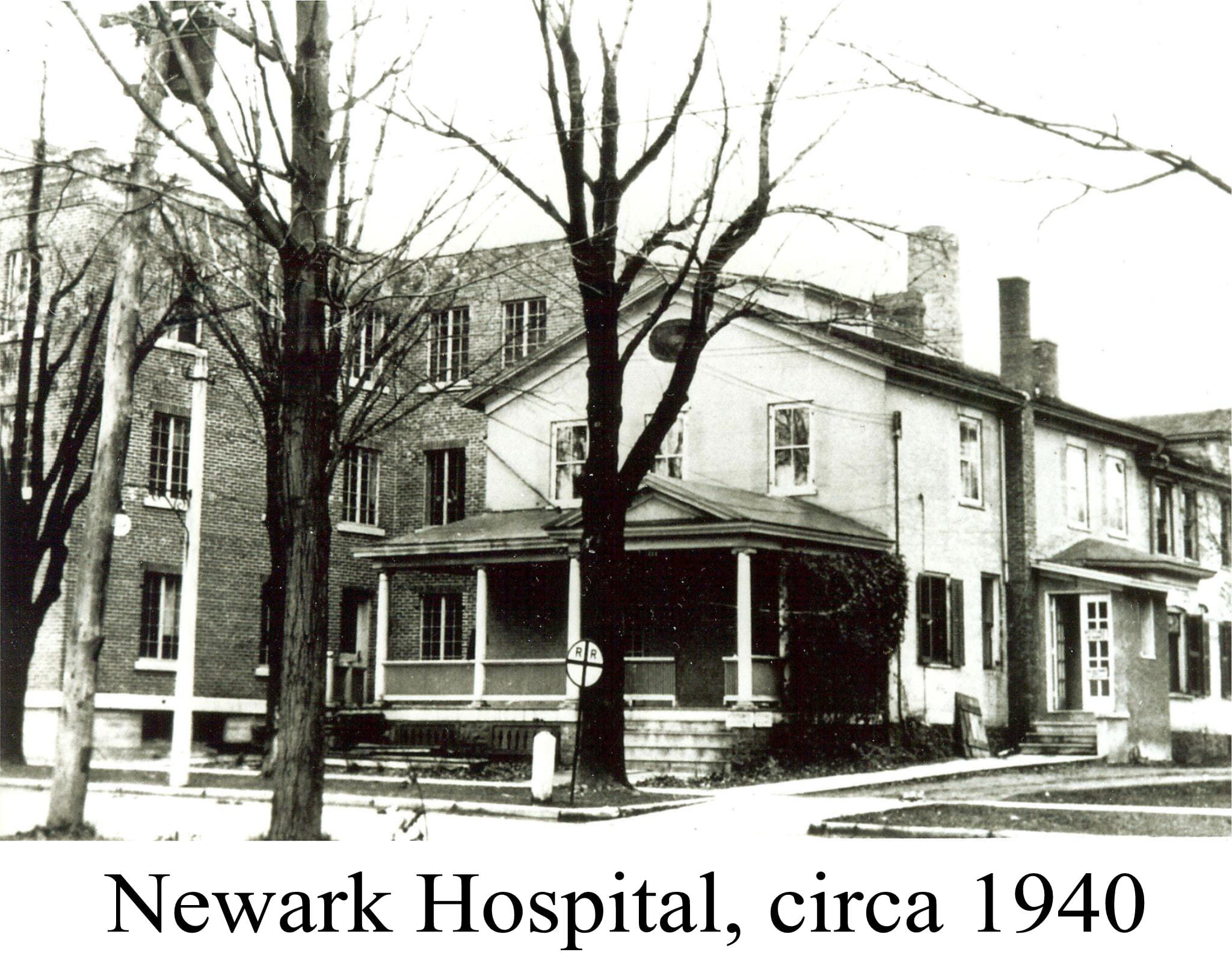 Two years later, two area physicians joined together to rescue the institution from closure by purchasing and re-opening Newark Hospital. Charles W. Webb, M.D., formally of the Clifton Springs Sanitarium, and Dr. John C. Carmer of Lyons became the benefactors of the hospital. Dr. Webb managed the hospital while Dr. Carmer consulted from his hospital in Lyons. In 1936, a three story addition was added on the east side of the hospital in addition to periodic upgrades of material and equipment.
Two years later, two area physicians joined together to rescue the institution from closure by purchasing and re-opening Newark Hospital. Charles W. Webb, M.D., formally of the Clifton Springs Sanitarium, and Dr. John C. Carmer of Lyons became the benefactors of the hospital. Dr. Webb managed the hospital while Dr. Carmer consulted from his hospital in Lyons. In 1936, a three story addition was added on the east side of the hospital in addition to periodic upgrades of material and equipment.
Dr. Charles Webb’s death on July 6, 1949 prompted Dr. Carmer to solicit recommendations from the community on the future of the hospital. The president of the Newark Chamber of Commerce requested a committee be formed to discuss the feasibility of constructing a modern health care facility in the community. Fourteen local physicians purchased the hospital on July 28, 1953 and renamed it the “Doctors’ Hospital”. The project to build a modern hospital was completed on April 3, 1957 when the Newark Wayne Community hospital opened in Newark. This hospital continues to serve the community as a member of the Rochester General Health System.
The last private hospital to serve Wayne County was organized in Wolcott, N.Y. Established in 1935 by Robert G. Stuck, M.D. and George Pasco, M.D. as the Wolcott Clinic, this institution on Lake Avenue steadfastly served the community for the next 31 years.
Dr. Robert G. Stuck was born in Savannah, N.Y. on December 5, 1898. After attending local schools and service in the U.S. Army during the First World War, he enrolled at Syracuse University and completed his medical degree in 1924. The following year he established his private practice in Wolcott and over the next decade created a thriving practice. Dr. George Pasco came from a well-respected family and who was the grandson of a well-known and long-time physician, Ferdinand M. Pasco, M.D (1839-1892). Shortly After graduating from Syracuse University Medical College in 1933, Dr. Pasco returned to the community and joined with Dr. Stuck in the venture to establish a local medical clinic.
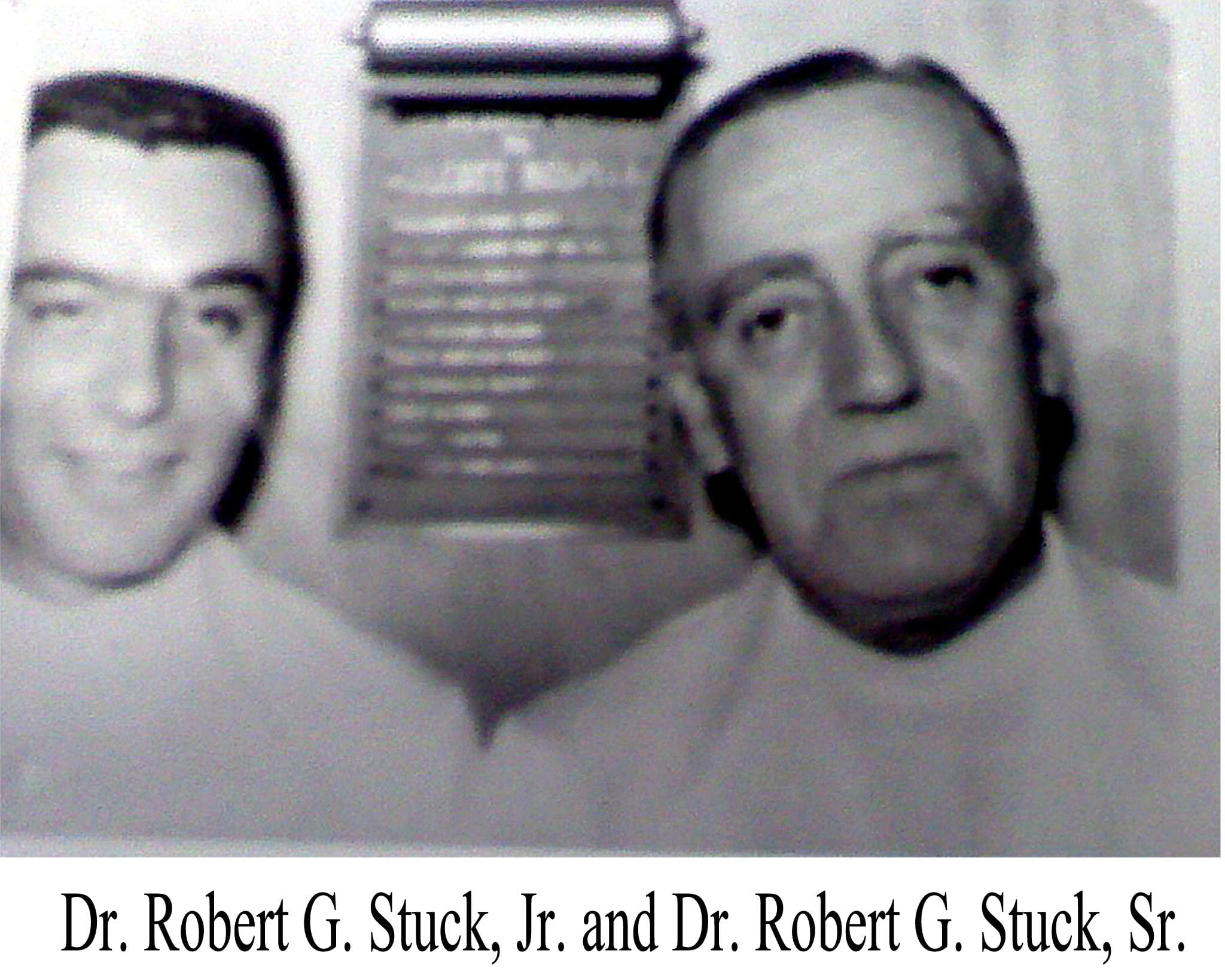 The clinic steadily grew with the community. A new wing was added in 1949 and the name was changed to the Wolcott Hospital to reflect its wider scope of services. The hospital worked in partnership with the other county hospitals due to the close knit community of physicians and patients. Dr. Pasco’s death in 1953 after a long illness, left a void that was filled in 1957 when Dr. Stuck’s son, Robert G. Stuck Jr., M.D., joined the hospital staff. He had worked with his father only a short time when on September 24, 1958, hospital founder Dr. Robert G. Stuck died at age 60.
The clinic steadily grew with the community. A new wing was added in 1949 and the name was changed to the Wolcott Hospital to reflect its wider scope of services. The hospital worked in partnership with the other county hospitals due to the close knit community of physicians and patients. Dr. Pasco’s death in 1953 after a long illness, left a void that was filled in 1957 when Dr. Stuck’s son, Robert G. Stuck Jr., M.D., joined the hospital staff. He had worked with his father only a short time when on September 24, 1958, hospital founder Dr. Robert G. Stuck died at age 60.
The younger Dr. Stuck would carry on as the hospital head until 1959 when Howard C. Hoople, M.D. joined the hospital. The creation of Medicare and Medicaid with the enacting of the Social Security Act of 1965, created challenges to all medical institutions, especially smaller ones. The rising cost of medical technology and patient care and state and federal legislative mandates forced smaller hospitals to either restructure into non-for profit organizations or to close.
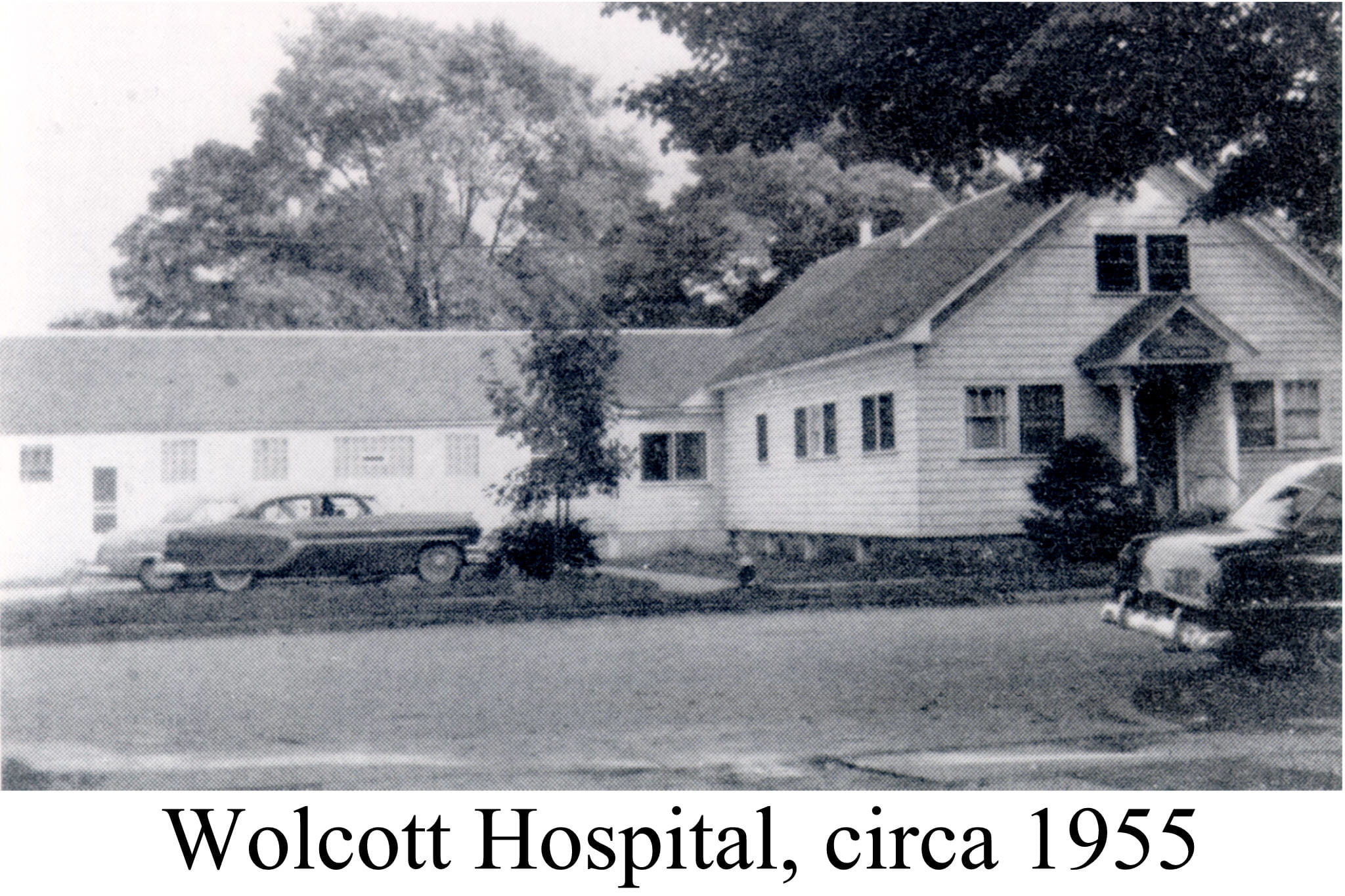 The Cato Citizen reported on October 5, 1967 that “rigid rules and regulations of the Medicare program, especially the ‘fireproof’ building requirements” force the hospital closed and no more patients were admitted after July 1, 1966. Dr. Robert Stuck left the area to pursue advanced surgical studies and Dr. Hoople continued to practice in Wolcott until his retirement.
The Cato Citizen reported on October 5, 1967 that “rigid rules and regulations of the Medicare program, especially the ‘fireproof’ building requirements” force the hospital closed and no more patients were admitted after July 1, 1966. Dr. Robert Stuck left the area to pursue advanced surgical studies and Dr. Hoople continued to practice in Wolcott until his retirement.
From the earliest days of the nineteenth-century, Wayne County has been served by a collection of medical families in whose dedication and skill have created the medical institutions that served the communities up to the present. Although only one hospital remains in the county, the legacy of all the hospitals and their physicians will remain to inspire future generations to community service.
- Bob Dickson
Special thanks to the Office of the Wayne County Historian and the Augustus L. and Jennie D. Hoffman Foundation for research assistance.
News clippings from the various Wayne County newspapers Courtesy of Fulton History newspaper collections at www.fultonhistory.com